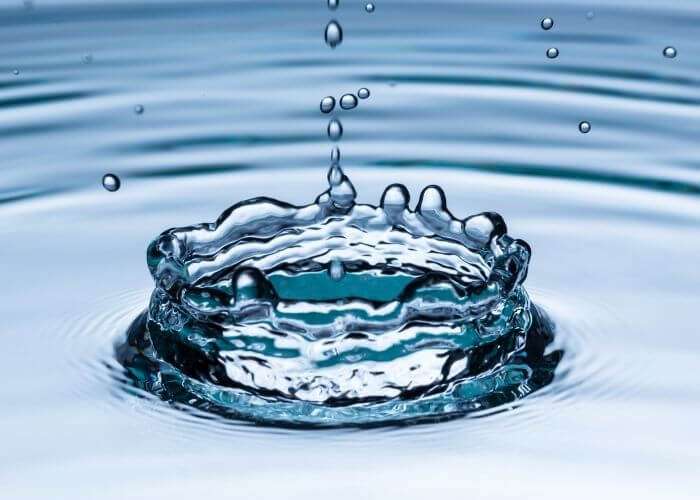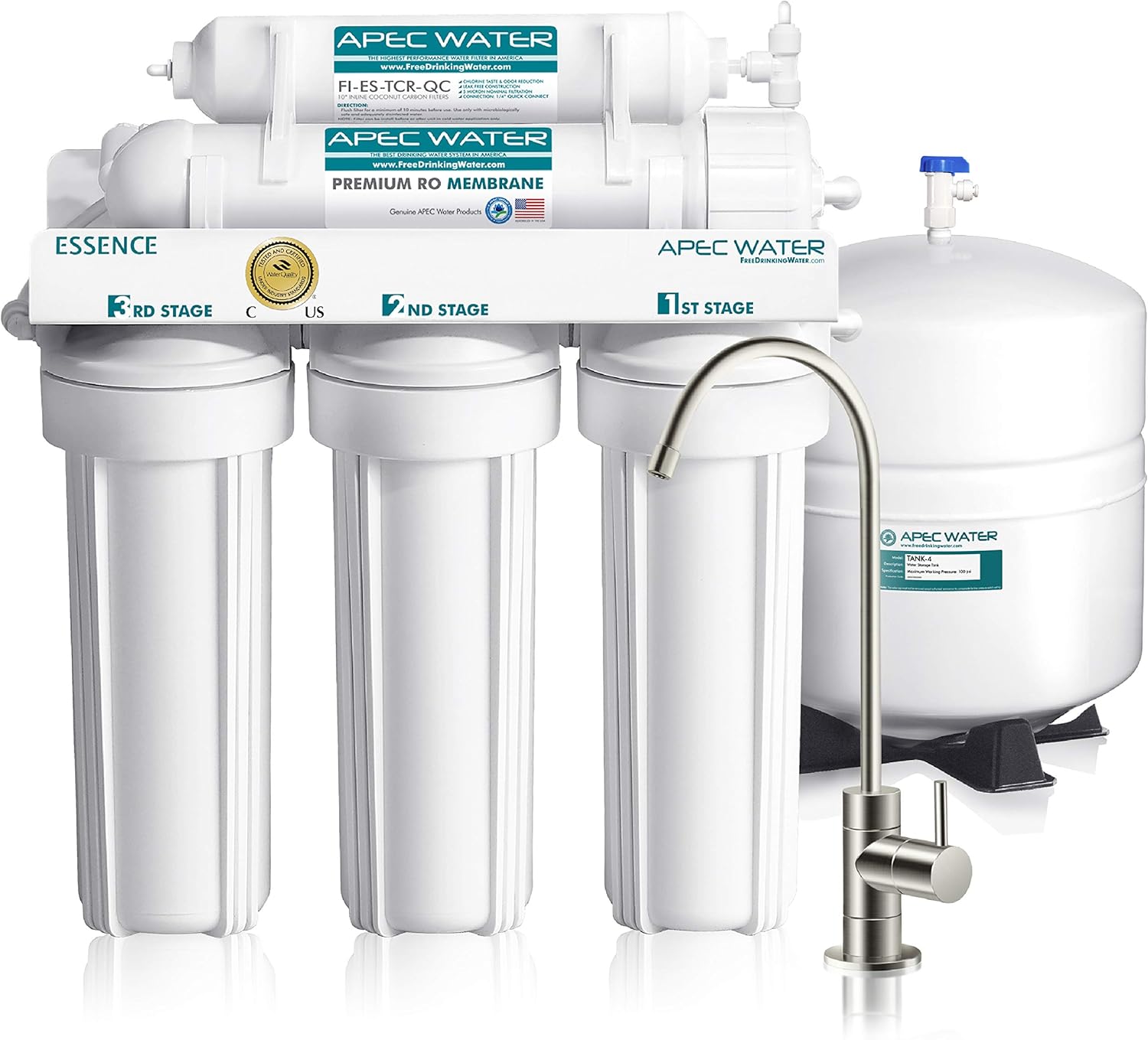Reverse Osmosis Vs. Water Softener: What’s the Difference?
Reverse Osmosis Vs. Water Softener: What’s the Difference?
You might assume the water coming through your tap is clean but is it? Although this water has passed the EPA standard, it still has contaminants and minerals when it finally comes through.
Years and years of consuming this water might not be healthy for you or your family. That’s why having your water treatment system might be the best course of action.
If you want our take on it, you could choose between reverse osmosis vs. water softener system or both for your house.
Reverse Osmosis Vs. Water Softener
Confused about their differences and what benefits they could bring? In this article, we’ll tell you everything you need to know about these two systems so that you can make a perfect choice.

What’s the Difference Between a Water Softener and a Reverse Osmosis System?
Many homeowners are often confused with the difference between a water softener and a reverse osmosis filter and use them interchangeably. But in reality, both are different; they work in different ways and produce different results.
General Differences
Water softener softens the water from its hard form when it has high levels of minerals. It takes out an excessive quantity of calcium ions and magnesium ions from the water in exchange for sodium ions.
On the other hand, reverse osmosis is when the water is made to pass through multiple layers of the semipermeable membrane through pressure. Water passes through these semipermeable membranes leaving the larger molecular particles of contaminants behind.
Water Treatment Process
Water is filtered through physical membranes or filters in the case of RO. The water is only conditioned through calcium and magnesium to exchange sodium and chloride for the water softener system.
Taste
There are some noticeable differences between the treated water of both individual processes. Since the water softener removes a large bit of calcium, magnesium, and iron from water and adds sodium in its place, the water tastes salty.
On the other hand, the reverse osmosis water filtration systems eliminate all the minerals from the water, including the essential minerals; thus, the water tastes bland but is pure and clean.
Efficiency
Water softeners are expensive on their own since they need a decent amount of electricity. RO won’t cost you any electricity, but the wastage from this process is huge. Almost 25 to 50 percent of the water is rejected in this process.
Water Quality
Both of these systems filter contaminants and minerals from water. But in the case of soft water vs. RO water, no amount of minerals is left behind after the RO system.
Water softener, on the other hand, removes the majority of the hardness from water. However, it still leaves some in the supply.
Maintenance
The whole-home reverse osmosis system is almost self-sufficient, and you only need to change the filter twice a year or so. On the other hand, water softener requires electricity to work. Besides, it would be best if you changed the salt regularly also.
How Does a Water Softener Work?
As the name suggests, a water softener softens the water from things that make it hard. Elements and impurities like chalk, gypsum, limestone, excess amount of calcium or magnesium, and too much iron make water hard.
Hard water results in water stains on clothes when they are washed. Besides, you can sometimes notice sediments on the floor and the bathroom that uses hard water.
The water is softened in this process by removing a large part of these minerals and impurities and replacing them with sodium. This replacement is done through the ion-exchange process, where calcium and magnesium are replaced with loosely held sodium ions.
Benefits of Using a Water Softener
The major source of hard water that contains large amounts of Calcium and Magnesium are bore wells, tube wells, hand-pumps, and wells. Because of the water hardness, a layer of hard sediment buildup in pipes, water heaters, washing machines, or boilers, shortening their working lives.
When you use a water softener system, this layer isn’t formed, and the life of your pipes or other water equipment increases. Consequently, it saves time and money on fixing those appliances.
Also, soft water usage reduces the use of soap, shampoo, and detergent to a great extent since hard water does not interact with them well. Besides, this water also keeps the skin softer and hair smoother.
How Does the Reverse Osmosis System Work?
Reverse osmosis is a process where water is pushed through a series of semipermeable filters. Some of these filters are carbon filters, sediment filters, or activated carbon filters.
These filters are very thin membranes. They are wound into a cylinder-shaped form as water enters through and passes each of these membrane sheets, compounds other than water molecules get stuck on them. As a result, the water that comes out is highly pure and free of all types of minerals and contaminants.
The water that doesn’t permeate through these membranes becomes highly concentrated with these left-out compounds, minerals, and salts. This concentrated and impure water flows out through another outlet and is usually dumped or flowed into other pressure vessels for the same process to repeat.
Benefits of Using a Reverse Osmosis System
Compared to the water softener, the reverse osmosis technology removes more types and more impurities from water and gives the purest drinking water. With these systems, you can remove harmful organic and inorganic contaminants from water effectively.
It removes as much as 90% of the water contaminants, including heavy metals, pesticides, organic and inorganic impurities. It also enhances the taste of water. Besides, this system is a lot easier to maintain and has a low production cost.
Also, don’t forget to check my review on Best Whole House Water Filter for Well Water here.
Why Reverse Osmosis and Softening Work Well Together?
Even if you have a water softening system installed in your home, it might not be enough to remove all the impurities. Besides, the large amount of sodium released into the water in that process makes the water taste like brine.
The reverse osmosis process can remove more than 98% of the sodium, along with almost all of the impurities. When you’re thinking about whole house reverse osmosis vs. water softener, both together installed in the house make an excellent combination.
There are three major benefits you can get when you work both the systems together in your house.
A Softener Protects an RO Unit
It is difficult for the RO system’s extremely thin membranes to remove the overwhelming amount of calcium and magnesium that reside in hard water. When you install the water softener system, the soft water that comes out of it passes through RO filters.
This soft water doesn’t harm the fragile filters of the RO system. Thus the softener almost acts like its protective barrier. Moreover, this simultaneous usage of both these treatment systems also extends the life of the RO system.
Quality Water
The combination of reverse osmosis vs. water softener system works great since the softener reduces the water’s hardness. And as for the RO system, it makes water pure by removing all the impurities and gives the household high-quality drinking water.
You can also check my review on Best Bottom Loading Water Dispenser here for pure drinking water.
Cost Savings
Another important aspect of using both of these systems is how much they reduce the household’s cost. Since the water’s hardness is removed, you require a low amount of soap, shampoo, or detergent over the year.
Additionally, the reverse osmosis system gives you the purest drinking water that eliminates the reason for buying bottled water.
Plus, since the water doesn’t contain any minerals and harmful contaminants, the water equipment and household appliances will require fewer plumbing sessions. Besides, clean water also means clean clothes after washing without any water stains.
Thinking of a solution for your office? Then check my review on Best Countertop Water Dispenser here.
https://www.youtube.com/watch?v=F6iuuKjKNFc
Frequently Asked Questions (FAQ’s)
Does reverse osmosis remove the hardness of water?
Install only the reverse osmosis system in your house. It will still reduce the hardness of water by removing calcium and magnesium along with other impurities.
Is drinking reverse osmosis water good for you?
There is no evidence as of yet about the harmful effects of reverse osmosis water. However, this water is acidic in nature, so drink with caution if you have a severe acidic reflex.
What is not removed by reverse osmosis?
While the RO system can remove many substances, impurities, and harsh compounds from the water, it cannot remove volatile organic chemicals like chlorine and radon.
Why can’t you drink softened water?
Softened water contains a high amount of sodium. An increased amount of it in the body might increase the risk of various diseases, especially heart diseases. However, if the soft water’s sodium content is less than 200ppm, it can be considered safe to drink.
Can bacteria grow in RO water?
Although RO membranes can stop bacteria from passing them, they can grow in the water later on.
Final Thoughts
When you compare reverse osmosis vs. water softener systems, you’ll see each has its pros and cons. They both work great in delivering you healthier water. However, they are meant to attain different goals.
If you combine these two, they can be the best economical solution in terms of purity and taste of water and cost-effectiveness.
Please Share To Inspire Us
Share on facebook
Share on twitter
Share on pinterest



